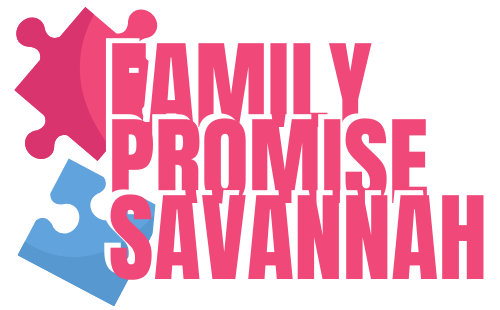Web design plays a crucial role in capturing and retaining the attention of users. To stand out from the competition and create an engaging online presence, businesses are increasingly turning to animation. Incorporating animation into web design offers a myriad of benefits that enhance user experience, increase engagement, communicate complex ideas, build memorable branding, improve website performance, and even boost search engine optimization efforts. In this article, we will explore the various advantages of using animation in web design and how it can revolutionize the way users interact with websites.
Enhancing User Experience
Captivating Visuals
One of the primary advantages of incorporating animation into web design is the ability to create captivating visuals. Animations can bring attention to important elements, such as call-to-action buttons, by adding subtle movements or eye-catching effects. This visual appeal not only grabs the user’s attention but also guides them towards desired actions, leading to increased conversions.
Engaging Interactions
Animation enables web designers to create engaging interactions that encourage users to explore the website further. Microinteractions, such as hover effects or scrolling animations, provide instant feedback and make the browsing experience more intuitive and enjoyable. These small yet impactful interactions contribute to a sense of interactivity and keep users engaged.
Storytelling Elements
Animation serves as an effective storytelling tool, allowing businesses to convey their brand narrative in a compelling way. Through animated illustrations, characters, or visual sequences, websites can evoke emotions, communicate complex ideas, and leave a lasting impression on users. By incorporating storytelling elements, businesses can establish a deeper connection with their audience.
Increasing User Engagement
- Grabs Attention – In today’s fast-paced online landscape, grabbing and holding the user’s attention is paramount. Animation offers an effective solution by adding movement and interactivity to web design. Attention-grabbing animations, such as sliders, hero banners, or animated backgrounds, entice users to explore further and spend more time on the website.
- Encourages Interaction – Interactive animations, such as form validations or progress indicators, encourage user interaction and make the browsing experience more dynamic. When users feel actively involved with a website, they are more likely to stay engaged and continue their journey. These interactive elements provide feedback, guide users, and create a sense of immersion.
- Boosts Conversion Rates – Animation can play a significant role in boosting conversion rates. By strategically incorporating animations into the user interface, businesses can draw attention to key conversion points, emphasize product features, or showcase testimonials. These animated elements create a visually appealing and persuasive environment, ultimately leading to higher conversion rates.
Communicating Complex Ideas
Simplifies Information
Complex concepts or processes can be challenging to explain through text or static visuals alone. Animation allows web designers to simplify information by breaking it down into easily digestible visuals and motion. Through animated infographics, tutorials, or product demonstrations, websites can convey complex ideas in a more intuitive and engaging manner.
Visualizes Concepts
Some ideas are best understood visually, and animation excels at visualizing abstract concepts or intangible products. By using motion, transitions, and transformations, web designers can bring ideas to life, making them more tangible and comprehensible to users. Animated visualizations can be particularly beneficial in industries such as technology, healthcare, or education.
Enhances Understanding
Animations can enhance the user’s understanding of a website’s functionality or navigation. By providing animated tutorials, tooltips, or interactive guides, users can quickly grasp how to navigate through complex interfaces or use specific features. This increased understanding reduces frustration and improves the overall user experience.
Creating Memorable Branding
- Unique Identity – Animation can help businesses establish a unique visual identity that differentiates them from competitors. Custom animated logos, mascots, or loading sequences contribute to a memorable brand presence. By infusing personality and creativity into their animations, businesses can leave a lasting impression and foster brand recognition.
- Brand Recognition – Consistent and well-designed animations can contribute to brand recognition. By incorporating animations that align with the brand’s color palette, typography, or visual style, websites reinforce the brand’s identity in the user’s mind. This consistency builds trust and familiarity, leading to stronger brand recall and customer loyalty.
- Emotional Connection – Animations have the power to evoke emotions and create a sense of connection with the audience. Whether it’s through animated storytelling, emotional character animations, or playful interactions, businesses can tap into the user’s emotions and establish a deeper bond. This emotional connection can drive brand loyalty and encourage users to become brand advocates.
Improving Website Performance
1. Faster Loading Times
Contrary to common misconceptions, animation can actually improve website performance. With advancements in technology, web animations can be optimized for fast loading times. By using efficient coding techniques, compressing files, and leveraging browser capabilities, animations can load quickly, ensuring a seamless and uninterrupted user experience.
2. Reduced Bounce Rates
Animation plays a vital role in reducing bounce rates, which refers to the percentage of users who leave a website after viewing only a single page. Engaging and interactive animations entice users to explore further, reducing the likelihood of immediate bounce. The longer users stay on a website, the higher the chance of conversion or engagement.
3. Mobile Optimization
Animation can be optimized for mobile devices, providing a consistent and engaging experience across different screen sizes. With the increasing number of mobile users, responsive animations that adapt to various devices and orientations can ensure that websites are accessible and visually appealing, regardless of the user’s chosen platform.
Enhancing SEO Efforts
Reduced Bounce Rates
Animation contributes to reducing bounce rates, which indirectly affects search engine optimization (SEO). When users are engaged and stay longer on a website due to appealing animations, the bounce rate decreases. Search engines interpret reduced bounce rates as a positive signal, indicating that the website provides valuable content and a satisfactory user experience.
Increased Dwell Time
Dwell time refers to the duration of time a user spends on a website after clicking on a search engine result. Engaging animations encourage users to stay longer, increasing the dwell time. Search engines consider longer dwell times as an indication of high-quality content, which can positively impact search engine rankings and visibility.
Lowered Exit Rates
Exit rates indicate the percentage of users who leave a website after viewing a particular page. Well-implemented animations can reduce exit rates by keeping users engaged and guiding them to explore further. By providing a visually appealing and interactive experience, animations can entice users to continue navigating through the website, reducing exit rates.


Leave a Reply